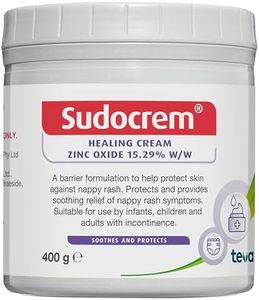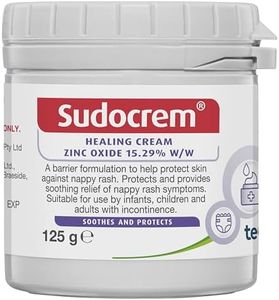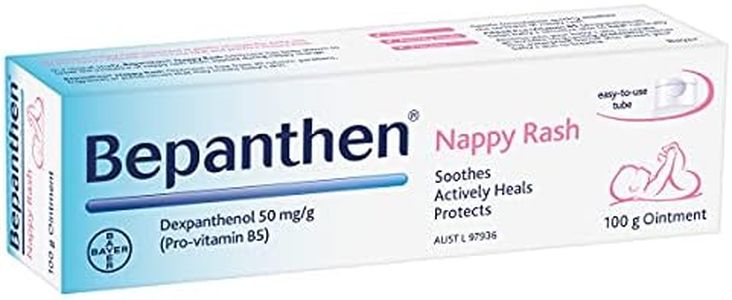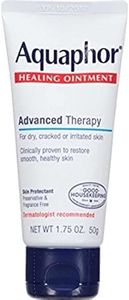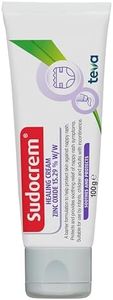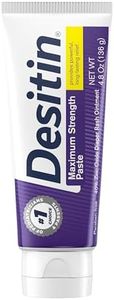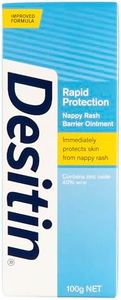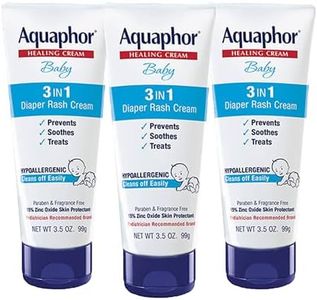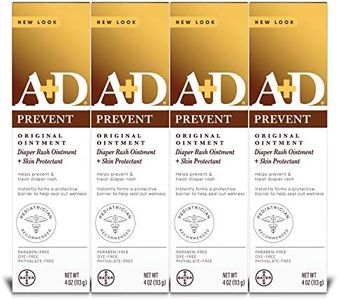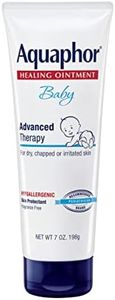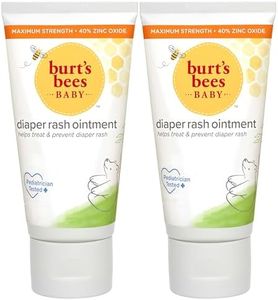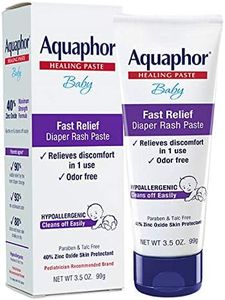We Use CookiesWe use cookies to enhance the security, performance,
functionality and for analytical and promotional activities. By continuing to browse this site you
are agreeing to our privacy policy
10 Best Diaper Cream
From leading brands and best sellers available on the web.By clicking on a link to a third party's website, log data is shared with that third party.
Buying Guide for the Best Diaper Cream
Choosing the right diaper cream is important for your baby's comfort and skin health. Diaper creams are designed to soothe, protect, and heal delicate baby skin that might become irritated from moisture and frequent diaper changes. With so many different types out there, it's important to understand which features matter most and how to read labels for your baby's specific needs.Active IngredientsActive ingredients are what make diaper creams effective at treating and preventing diaper rash. Common ones are zinc oxide, which forms a protective barrier on the skin, and petrolatum, which locks in moisture. Some creams also contain natural elements like calendula or beeswax. When picking, if your baby has frequent rashes, higher concentrations of zinc oxide usually mean stronger protection, but for everyday use, a lower concentration can be gentle enough. For sensitive skin or if you prefer fewer chemicals, creams with natural or minimal ingredients might be better. Always check for allergens or substances you know your baby reacts to.
Consistency and TextureConsistency refers to how thick or thin the cream is, which affects how easy it is to spread and how long it stays on the skin. Thicker creams are good at forming a long-lasting barrier for babies prone to wetness or overnight protection, but they can be harder to wipe off during changes. Lighter, more lotion-like creams are easier to apply and remove, making them ideal for everyday prevention or mild cases. Consider where and when you'll use it: thicker for night or heavy wetting, lighter for quick daytime changes.
Fragrance and AdditivesFragrance can make diaper cream smell pleasant, but it may also irritate sensitive skin, especially in young babies or those with allergies. Similarly, additives like colorants or parabens are sometimes present but not necessary. If your baby has had reactions in the past, it’s better to choose a fragrance-free or hypoallergenic formula. Generally, the simpler the ingredient list, the safer it is for sensitive or newborn skin.
Ease of ApplicationHow a cream goes onto the skin and comes off matters, because frequent diaper changes can be stressful enough without a difficult product. Some creams come in tubes for easy, less-messy application, while others are in jars. Consider how often you change diapers and what feels most convenient for your routine. If you need something quick, look for creams designed for smooth, easy spreading; for more stubborn rashes, thicker pastes can offer extra staying power.
Intended Use (Prevention vs. Treatment)Some diaper creams are designed for daily use to prevent rashes, while others are formulated to treat existing irritation. Prevention creams tend to be lighter, offering a basic barrier, while treatment creams are thicker and have higher concentrations of active ingredients to heal rash more quickly. If your baby rarely gets rashes, a prevention formula is usually enough. For babies with persistent or severe rash, look for one classified as ‘treatment’ and consult your doctor if it doesn’t help.
